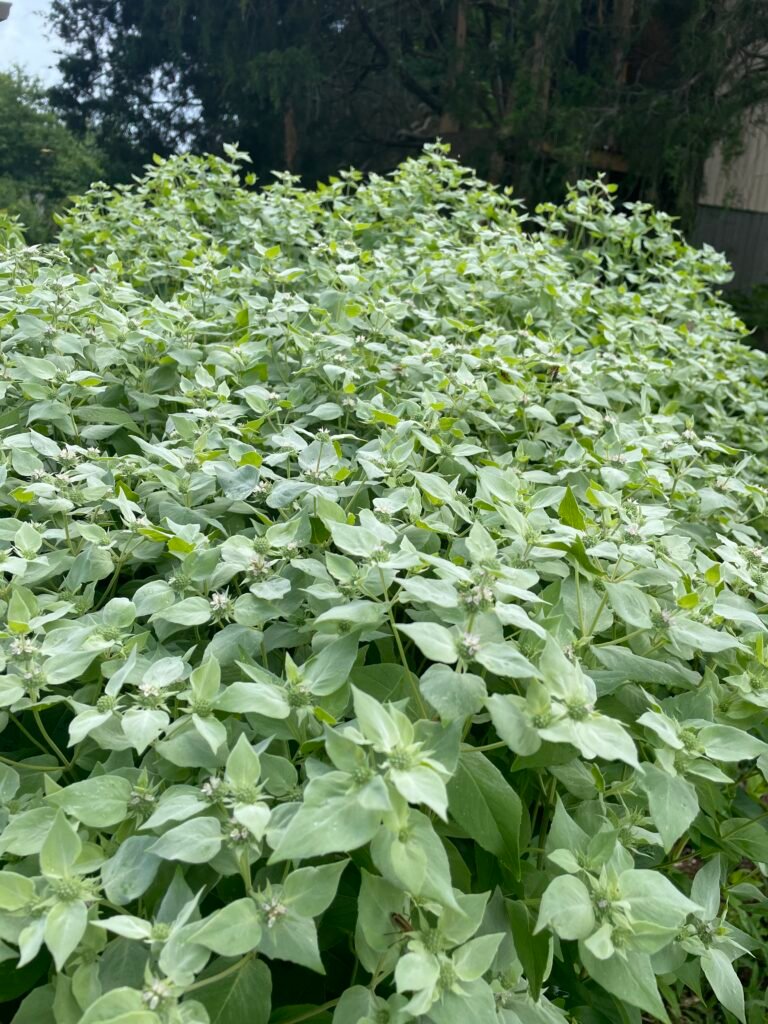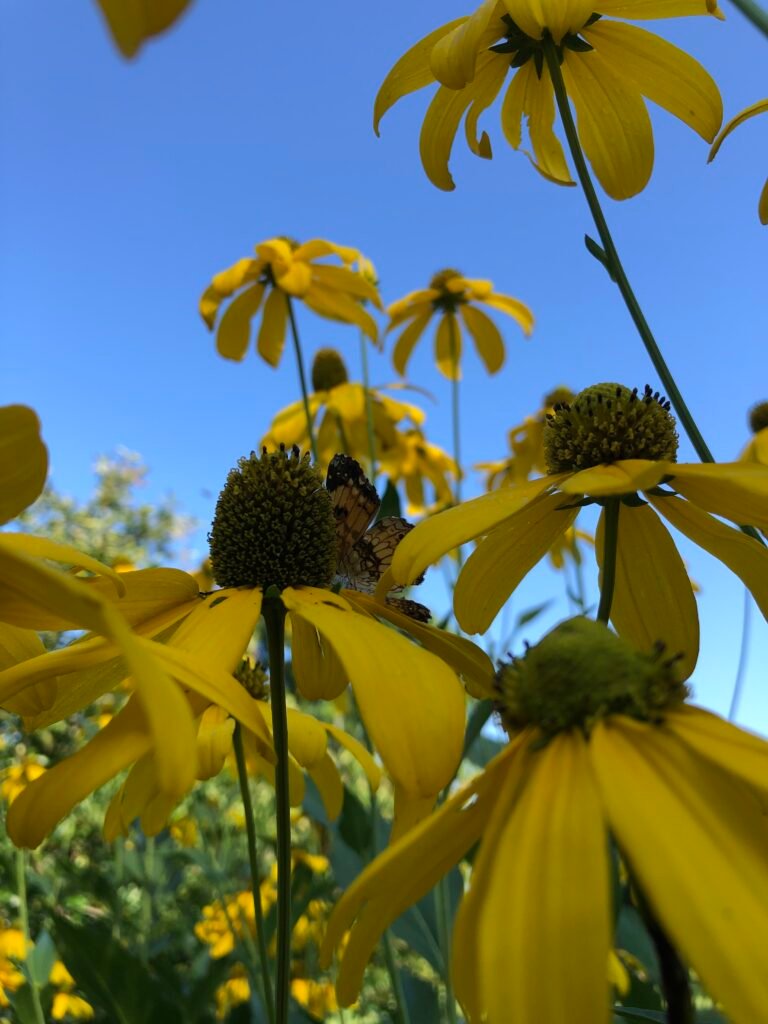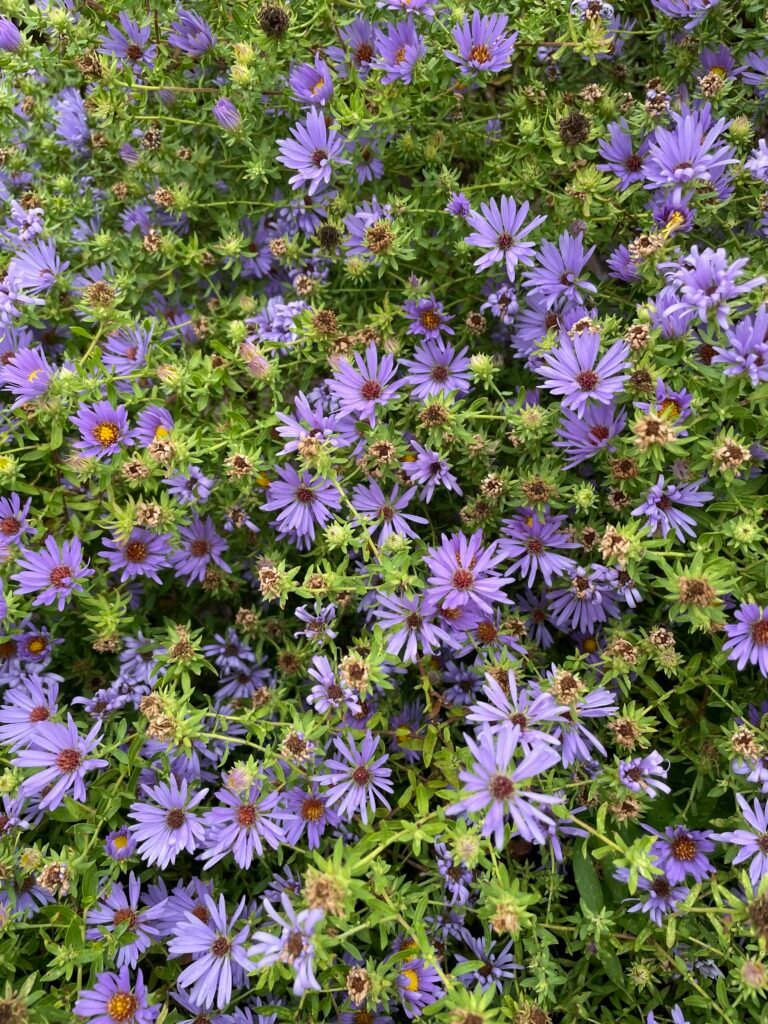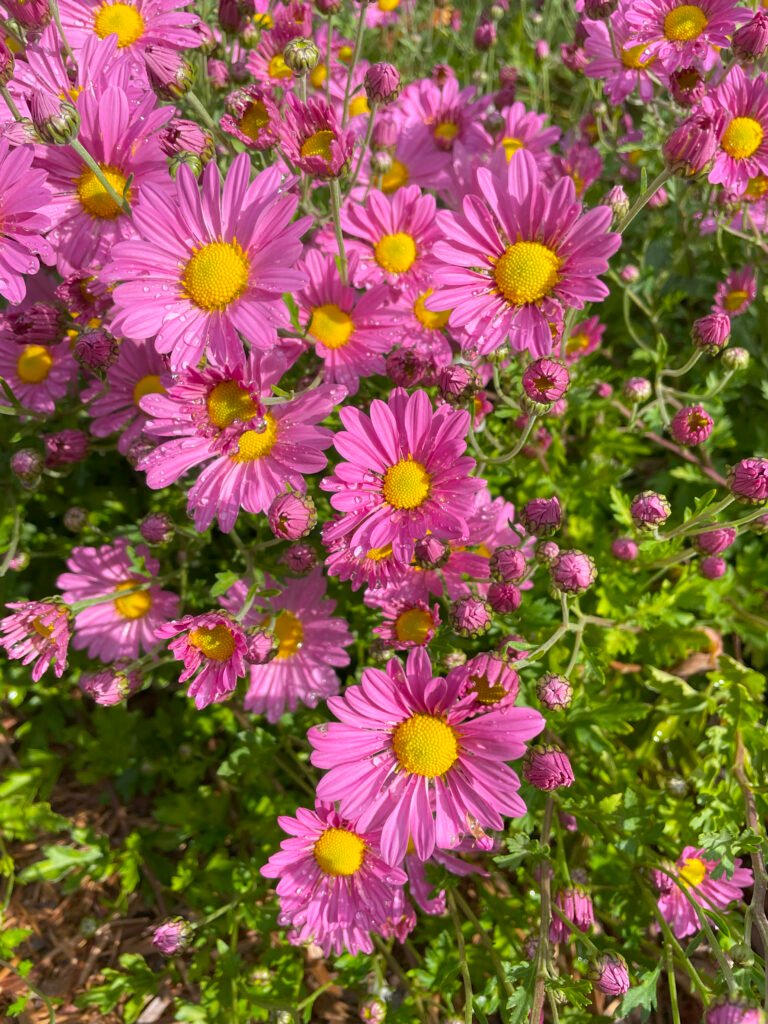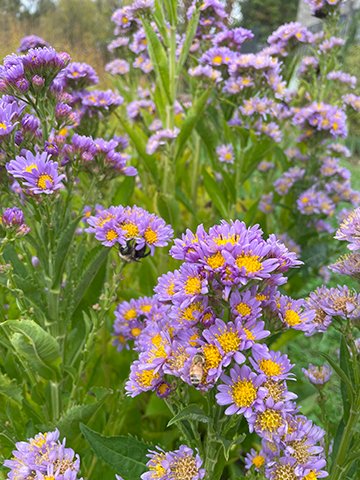It’s July and the spring garden is well in the rearview mirror. The summer-blooming perennials are coming on strong and so are all of the insects that call our gardens home. The word “pollinator” has become a huge, HUGE buzz word in the gardening world. Literally and figuratively, “pollinator” is a buzz word! These are plants at Yew Dell that have so many insects visiting them that you can hear the buzz. Flies, butterflies, moths, wasps, bees, beetles, and bugs galore feed on the pollen and nectar of our garden plants during this time of year.
I’ve said for a long time that the more insects you have in the garden, the less problems you will have with insects attacking your plants in a bad way. Promoting a large and diverse habitat in your garden allows for good bugs to build up populations against the bad ones. Lacewing larvae will decimate populations of aphids, but when they are adults breeding and laying eggs, they feed on the nectar and pollen of flowers! Those giant tomato hornworms that you despise in the garden in the summer are attacked by a parasitic wasp who feeds on the nectar of flowers. In fact, there are many types of parasitic wasps that attack garden pests and feed on the flowers of our garden plants!
The more nectar and pollen in the garden, the more we support these good insects. We have coined the term ‘super pollinator’ for some of the plants we sell. These are the plants that you can hear buzz when you walk by them! The insects absolutely love them and you should too. Adding in different species for different times of the year provides the food needed for these garden companions all season long.
Hop- I mean buzz- on over to our online plant market and take a look at our Super Pollinator collections– including all of these below for July of 2024.
Summer
- Agastache ‘Blue Fortune’ (Anise Hyssop)
- Clinopodium nepeta subsp. nepeta (Calamint)
- Eryngium yuccifolium (Rattlesnake Master)
- Eutrochium fistulosum (Hollow Joe Pye Weed)
- Helianthus maximilianii (Maximilian Sunflower)
- Nepeta ‘Balneplud’ (Blue Prelude™ Catmint)
- Pycnanthemum muticum (Blunt Mountain Mint)
- Rudbeckia ‘American Gold Rush’ (Black Eyed Susan)
- Rudbeckia laciniata ‘Herbstonne’ (Cut-leaf Coneflower)
- Solidago rugosa ‘Fireworks’ (Rough Goldenrod)
- Veronica ‘Wizard of Ahhs’ (Magic Show® Spike Speedwell)
Fall
- Aster tataricus ‘Jindai’ (Tatarian Aster)
- Chrysanthemum ‘Brandywine Sunset’ (Hardy Garden Mum)
- Chrysanthemum ‘Campfire Glow’ (Hardy Garden Mum)
- Chrysanthemum ‘Raspberry Sorbet’ (Hardy Garden Mum)
- Symphyotrichum laeve ‘Bluebird’ (Smooth Aster)
- Symphyotrichum laeve ‘Bluebird’ (Smooth Aster)
- Symphyotrichum oblongifolium ‘October Skies’ (Fragrant Aster)

